
Immigration Enforcement Case Review Process FAQs (PDF | 260 KB)

Removal Statistics
U.S. Immigration and Customs Enforcement (ICE) has adopted common sense policies that ensure our immigration laws are enforced in a way that best enhances public safety, border security and the integrity of the immigration system. As part of this approach, ICE has adopted clear priorities that call for the agency's enforcement resources to be focused on the identification and removal of those that have broken criminal laws, recently crossed our border, repeatedly violated immigration law or are fugitives from immigration court.
Over the past four years, through the use of targeted enforcement tools this approach has fundamentally shifted ICE's removal efforts to focus on criminal and other priorities.
In FY 2012, ICE removed 409,849 individuals. Ninety-six percent of these removals fell into one of ICE's enforcement priorities, a record high.
Removal Statistics - Charts and Graphs

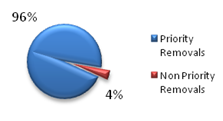
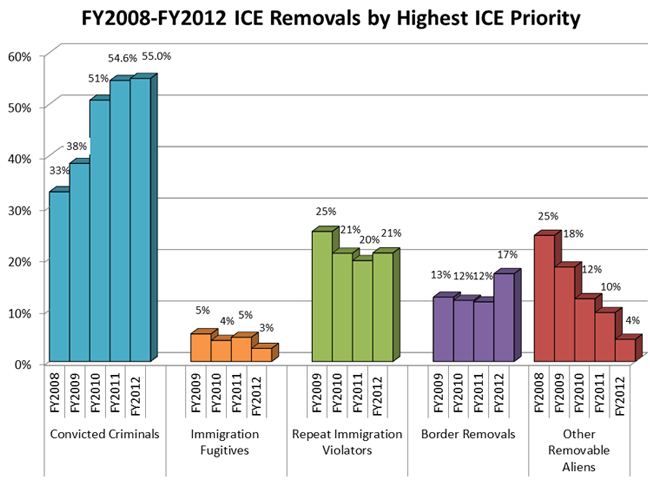
Criminal Aliens
55 percent, or 225,390, of the people removed in FY 2012 were convicted criminal aliens – almost double the removal of criminals from FY 2008, and the largest number of criminal aliens removed in agency history.
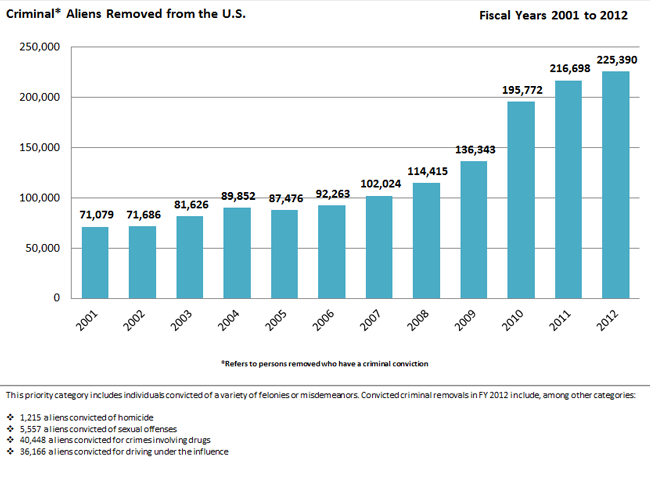
ICE remains committed to maximizing the removal of those who pose the greatest threat to public safety or national security. ICE will continue to evaluate its enforcement policies, operations and programs to ensure that they are focused on our highest priorities, making adjustments when necessary. On December 21, 2012 ICE issued a new national detainer policy restricting the use of detainers against individuals who have been arrested or convicted of minor traffic offenses or other petty offenses, helping to ensure that available resources are focused on apprehending felons, repeat offenders and other ICE priorities.
Recent Border Crossers
As part of the Department of Homeland Security's unprecedented efforts to secure our nation's borders, ICE prioritizes the identification and removal of recent border crossers. ICE also conducts targeted enforcement operations with the U.S. Border Patrol. These historic results along the Southwest Border are attributable to the joint efforts of U.S. Border Patrol agents and ICE officers and agents, and the emphasis ICE places on the removal of recent border crossers.
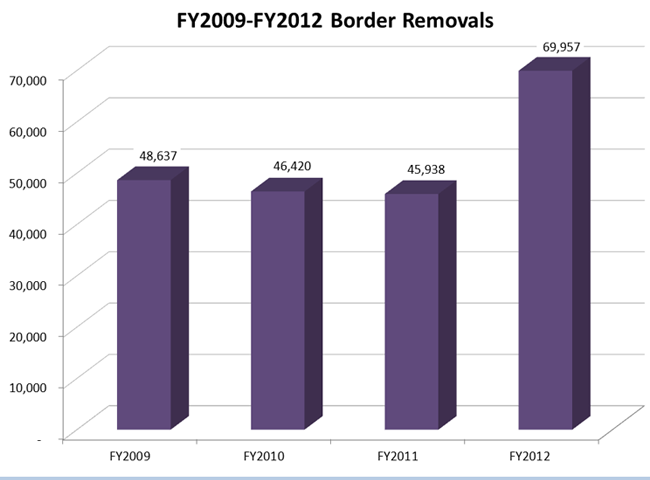
In FY 2012, ICE removed 69,957 recent border crossers.
Repeat and Egregious Immigration Law Violators and Immigration Fugitives
Individuals who return to our country after having been previously removed, those who engage in immigration fraud, and those who flagrantly ignore an immigration court's order to leave the country remain an enforcement priority. Prioritization of these individuals also enhances border security and promotes the integrity of the immigration enforcement system.
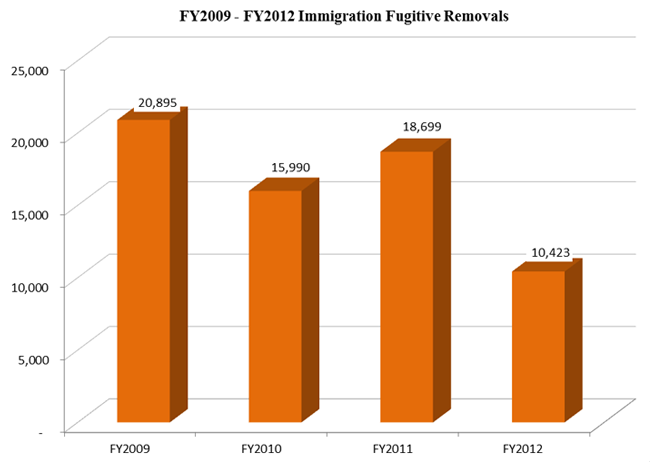
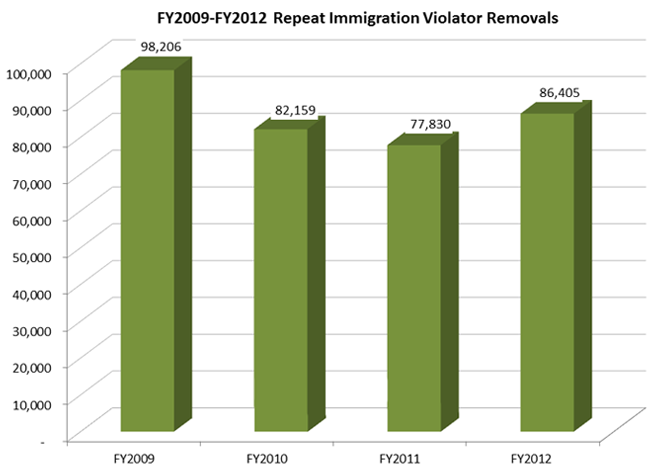
In FY 2012, ICE removed 96,828 aliens who were either repeat immigration violators or immigration fugitives.
Resources
Methodology
ICE makes every effort to count removals or returns in the year in which they occur. This is the case for the overwhelming majority of removals and returns. However, when a removal or return occurs near the end of a fiscal year, it sometimes cannot be confirmed as completed until the early part of the following fiscal year. When this happens, the removal or return is counted in the year it is confirmed rather than the previous year when it actually occurred. In addition, there are a small number of cases, such as voluntary departures, where ICE is not present when the individual leaves the country. To capture these departures, ICE periodically conducts data base searches such as airline manifest records to confirm the date. These departures are also counted in the year confirmed. Regardless of whether the removal or return is counted in the year it occurred or the year confirmed, each removal or return is only counted in one fiscal year.
ICE Priority Chart Hierarchy
If an alien was identified by more than one priority, ICE defaults that individual to the highest priority based on the following hierarchy (ordered highest to lowest):
- Criminal Offender
- Immigration Fugitive
- Repeat Immigration Violator
- Border Removal
- Other Removable Alien
Definitions of Common Terms
Criminal Offender: An alien convicted for one or more crimes. This category includes individuals who, in addition to have been convicted of a crime, also may have been immigration fugitives, border removals, or were previously removed or returned.
Immigration Fugitive: An alien who is subject to a final order of removal and has absconded instead of complying with the order.
Repeat Immigration Violator: An alien previously removed or returned who has re-entered the country illegally again.
Border Removal: An alien apprehended by U.S. Customs and Border Protection (CBP) at or near the border or a port of entry and referred to U.S. Immigration and Customs Enforcement (ICE). ICE only counts this type of removal if CBP referred the alien to ICE for detention, administrative prosecution or removal.
Other Removable Alien: An alien who is not confirmed to be within any of the above definitions. Removals in this category may include aliens removed on national security grounds or for general immigration violations.
